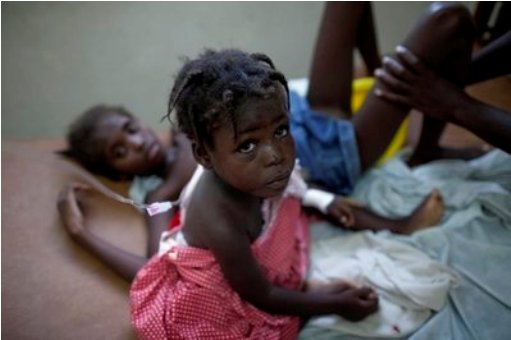
ANNUS HORRIBILIS was the term Queen Elizabeth II used to describe 1992 as a bad year. the Latin-speaking Rizal also heard about a bad year too in 1882 when the country was hit by a cholera epidemic, an earthquake, a typhoon, floods and an epidemic of beri-beri. Agriculture was affected, with land left untilled, and harvest in storage depleted or destroyed. Little wonder Rizal?s letters from Madrid complain of the inadequate and irregular allowance from home.
Hidden in this history of calamity is one detail: a comet ripped the sky. So fantastic was this comet seen in Calamba that Rizal?s father asked if it was also visible in Spain. Rizal replied that he saw it, too. This brilliant comet might have been a sight to behold, but in the Philippines it was a bad omen.
Rizal?s correspondence with his family in the last quarter of 1882 is quite surreal. Letters from Barcelona and Madrid describe sights and experiences of the wide-eyed indio in the mother country, while letters from home list those afflicted with or dead from cholera. It is odd that the gory details are left out, perhaps because Rizal knew that cholera is spread through contaminated water and that the classical symptoms are vomiting and/or frequent diarrhea of a consistency described as ?rice water.? Victims grow weak from dehydration, their eyes become deep and their fingertips wrinkled. Many would die.
How did they cope? all schools were closed, students sent home, except third year medical students who were made to serve in the University of Santo Tomas, San Lazaro and other places converted into quarantine for those afflicted or suspected to have cholera. Rizal?s brother-in-law Silvestre Ubaldo, writing from Bulacan in October 1882, said, ?Here in the provinces manzanilla flower was exhausted, there is a shortage of cognac in the groceries, and its price doubled as none can be obtained. we drink manzanilla and tea as our drinking water, and smudge and clean the house constantly.?
Antonino Lopez, another brother-in-law, wrote in August 1882: ?Here in Calamba, as well as in every barrio, there is a procession every night praying God to spare the town of the plague. all foodstuffs that may cause illness, like those with a bad smell, such as small dried fish, pickled fish, and the like, are forbidden. Therefore the town of Calamba is very clean.?
Manuel Hidalgo, another brother-in-law, wrote: ?Cholera attacked our houseboys, Flaviano and Evaristo, but thanks to local remedies (sambong, pepita, garlic, etc.) they were saved. Alfonso, Narcisa?s servant, died. An average of 16 die daily.?
It was a terrible time compared to ours. during the bird flu scare information was transmitted faster, importation of fowl regulated, and thermo-scanners at airports identified suspected carriers. we saw no need for nationwide prayer as they had in 1882.
Paciano Rizal left us with a sense of their times:
?As to the social life in our town, many people go to church in the morning to attend daily prayers as prescribed by the archbishop?s pastoral letter. there is a continuous movement of men carrying bottles to get medicine. the priests are always riding in vehicles to bring spiritual aid to where they are called. in the afternoon there are bonfires in many places to serve as disinfectant and the people go to church again to recite the novena to San Roque. At night processions, sometimes three, cross one another in the streets until the late hours. At their conclusion, the participants eat at the house of the leader, who prepares food and fireworks as much as his resources permit.
?What I admire in these things is the contrast between the sentiments of old and young. the old grieve when they ought to rejoice because the plague makes them see their end closer. the young rejoice when they ought to grieve because they are in danger of not being able to fulfill the object for which they have come to this world.
?Now that the plague is at its peak, an average of 15 persons die daily. from night to morning, healthy and robust men become corpses or at least, so completely unrecognizable and emaciated, hovering between life and death. Those who succumb to any other diseases deserve to be envied, because at least, they are attended to and taken care of at their homes, they are taken to church and are buried in the cemetery, but the victims of this scourge cannot comfort themselves that they are treated thus. Their relatives, even the close ones, flee; they are not taken care of and if sometimes they are attended to, they become a heavy burden to their companions in the house who fear contagion. They are wrapped up and buried with the Chinese.
?It is a sad thing to die under these circumstances and of this disease. Dogs devour the exposed. I doubt very much if the grave has a depth of two spans, and there is a throng of dogs around. If we were of Brahmin caste, transmigration would be most natural for us, but since we are Catholics, we wish our ashes to be respected.?
A typhoon in October 1882, followed by another in November, destroyed homes along Laguna de Bay and dissolved sugar in warehouses yet people rejoiced, believing these typhoons chased cholera away. But just when they thought everything was okay, a new disease arrived that caused swelling in the legs and death: beri-beri. the year 1882 was annus horribilis, indeed.
Comments are welcome in my Facebook Fan Page.